-
 New product -55%Fizik saddle insert
New product -55%Fizik saddle insert- €4.50
- €9.99
-
 New product -42%San marco Era racing titanium saddle red
New product -42%San marco Era racing titanium saddle red- €52.19
- €89.99
-
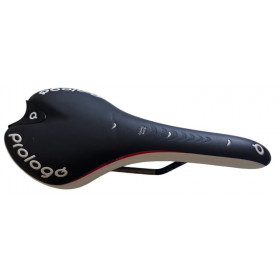 New product -40%Prologo Nago Evo Ti saddle black
New product -40%Prologo Nago Evo Ti saddle black- €65.94
- €109.90
-
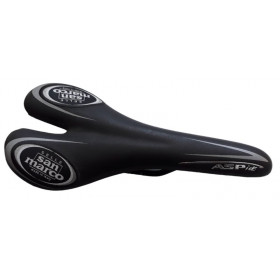 New product UsedSan Marco Aspide saddle
New product UsedSan Marco Aspide saddle- €81.94
-
 New product -43%Fizik Arione classic saddle
New product -43%Fizik Arione classic saddle- €85.50
- €150.00
-
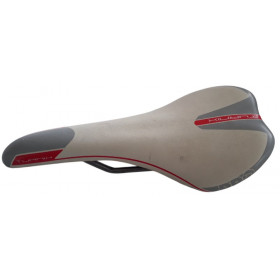 UsedPRO Turnix saddle
UsedPRO Turnix saddle- €19.99
-
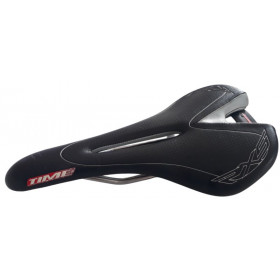 UsedTime RXS saddle
UsedTime RXS saddle- €19.99
-
 UsedSelle Italia SLS Team edition
UsedSelle Italia SLS Team edition- €19.99
-
 UsedSelle Italia SLR monolink with seatpost
UsedSelle Italia SLR monolink with seatpost- €79.99
-
 UsedPrologo Scratch Ti 1.4 saddle
UsedPrologo Scratch Ti 1.4 saddle- €59.99
-
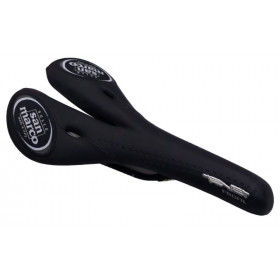 New productSan Marco Tevet saddle
New productSan Marco Tevet saddle- €44.99
-
 New product -62%Prologo Nago Evo Nack saddle
New product -62%Prologo Nago Evo Nack saddle- €91.16
- €239.90
-
 UsedPrologo Nago Evo Pro Ti saddle
UsedPrologo Nago Evo Pro Ti saddle- €34.95
-
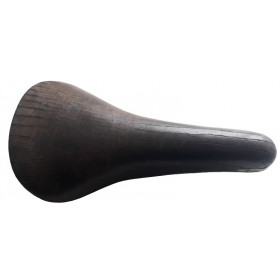 UsedSelle italia turbo special saddle
UsedSelle italia turbo special saddle- €79.99
-
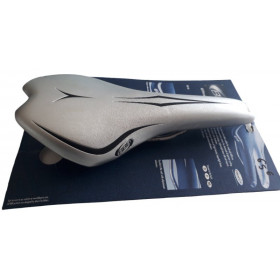 New product -45%BBB ultrabase saddle
New product -45%BBB ultrabase saddle- €35.74
- €64.99
-
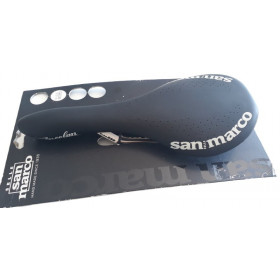 New product -12%San Marco Zoncolan saddle
New product -12%San Marco Zoncolan saddle- €96.45
- €109.60
-
 UsedSan Marco Ponza saddle
UsedSan Marco Ponza saddle- €7.99
-
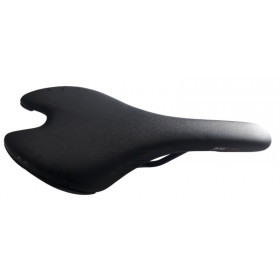 New product -40%Fizik Pave CX saddle manganeses rails
New product -40%Fizik Pave CX saddle manganeses rails- €47.99
- €79.99
-
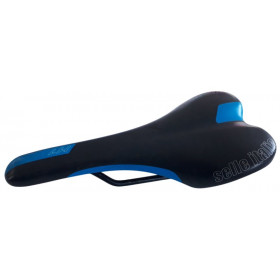 More detailsUsed Out-of-StockX1 Selle Italia saddle
More detailsUsed Out-of-StockX1 Selle Italia saddle- €19.99
-
 More detailsUsed Out-of-StockCarbon bike saddle San Marco Racing team
More detailsUsed Out-of-StockCarbon bike saddle San Marco Racing team- €59.99
-
 More detailsUsed Out-of-StockSelle Italia Turbomatic 3
More detailsUsed Out-of-StockSelle Italia Turbomatic 3- €11.99
-
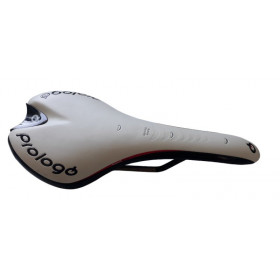 More detailsNew product -40% Out-of-StockPrologo Nago Evo 134 Ti solid saddle white
More detailsNew product -40% Out-of-StockPrologo Nago Evo 134 Ti solid saddle white- €65.94
- €109.90
-
 More detailsUsed Out-of-StockFizik Aliante carbon saddle
More detailsUsed Out-of-StockFizik Aliante carbon saddle- €29.99
Showing 1-23 of 23 item(s)
Unlock your potential: find the perfect saddle for your road adventure !
Choosing the right road bike saddle: comfort, performance, and endurance
When we talk about performance and enjoyment on a road bike, the saddle occupies a central place. Too often overlooked, it nevertheless plays a fundamental role in the cyclist's comfort, especially during long rides. Whether you're a cyclosportive enthusiast, a long-distance enthusiast, or a simple weekend rider, finding a comfortable road bike saddle is essential to avoid pain, numbness, or muscle discomfort.
Why choosing the right road bike saddle is crucial
The road bike saddle is the main point of contact between the cyclist and their bike, along with the pedals and handlebars. A poor saddle can lead to poor posture, reduced pedaling efficiency, and even long-term injuries. Conversely, a well-fitting, comfortable road bike saddle significantly improves the riding experience, especially over long distances.
Characteristics of a good road bike saddle
1. Shape
There are flat, semi-rounded, or rounded saddles. The choice depends on your body type and your riding position:
Flat saddles are suitable for dynamic cyclists with good pelvic flexibility.
Rounded saddles offer more support for less flexible cyclists or those with a more upright position.
2. Width
The width of the road bike saddle should correspond to the width of the sit bones (the pelvic bones). A saddle that is too narrow compresses the soft tissue, while one that is too wide can hinder pedaling.
3. Padding
Contrary to popular belief, more foam does not necessarily mean more comfort. A comfortable road bike saddle offers a good balance between firmness and vibration absorption. Models with gel or memory foam inserts are popular among cyclists looking for increased comfort.
4. The central channel or recess
Many road bike saddles incorporate a central channel or recess to relieve pressure on the perineum. This is a preferred option for long rides or cyclists with sensitive perineal areas.
5. The rails
The saddle's rails (often made of steel, titanium, or carbon) affect its weight, stiffness, and comfort. The lighter and more absorbent they are, the better the saddle's performance.
The specific features of a long-distance road bike saddle
For enthusiasts of cycle touring, long-distance brevets, or extreme events like Paris-Brest-Paris or the Race Across France, comfort becomes an essential requirement. Over several hundred kilometers, or even several days in the saddle, the slightest pressure point or misplaced friction can quickly turn into persistent pain, numbness, or irritation. This is why long-distance road bike saddles incorporate very specific features, designed for endurance, ergonomics, and durability.
1. A wider, more stable seat
Unlike ultra-sleek saddles intended for short-distance competition, saddles designed for long-distance road cycling often offer a wider seating platform at the sit bones. This allows for better weight distribution, limiting pressure on soft tissues and sensitive nerves, particularly in the perineal area. This more generous surface area helps reduce hot spots, which are common during prolonged pressure.
2. Technical, breathable, and durable materials
A comfortable long-distance road bike saddle uses carefully selected covers:
Breathable microfibers, often microperforated, to promote ventilation.
Anti-abrasion and moisture-resistant covers, essential in case of rain, heavy perspiration, or frequent clothing changes.
Progressive-density foam or high-tech gel inserts, capable of effectively dampening micro-vibrations while maintaining good support.
3. A central channel or pronounced perineal recess
Long-distance saddles very often incorporate a central recess or an anatomical channel. This design detail is not insignificant: it helps relieve pressure on sensitive areas (prostate in men, pudendal nerve, genital tissues), promoting blood circulation and reducing the risk of numbness. This is a particularly good choice for cyclists who adopt an aerodynamic position for prolonged periods.
4. An ergonomic design designed to limit friction
The ergonomics of a long-distance road bike saddle go beyond simple shape: the edges must be rounded, the transitions between padding zones must be smooth, and the materials must limit friction on the thighs and crotch. These details prevent the appearance of irritation, burns, or skin injuries due to repetitive movements on the saddle.
5. A construction designed to absorb vibrations
Long distances involve hours of exposure to road irregularities. Some high-end saddles feature carbon, titanium, or shock-absorbing alloy rails, which effectively absorb vibrations transmitted by the frame. This helps reduce muscle fatigue and protect the back and hips on uneven terrain.
6. Saddles tested in extreme conditions
The most renowned manufacturers design their long-distance road bike saddles in collaboration with ultra-cyclists or endurance athletes. These models are often tested in benchmark races such as:
Paris-Brest-Paris (1,200 km)
Race Across France (2,500 to 2,600 km)
Transcontinental Race
NorthCape4000
These events serve as full-scale test benches to validate the comfort and durability of materials over thousands of kilometers.
How do I know if a road bike saddle is right for me ?
Finding the ideal road bike saddle is a personal and sometimes tricky process. Every cyclist has their own unique body shape, posture, flexibility level, and pedaling style. A saddle that one cyclist finds comfortable may be uncomfortable for another. This is why there's no one-size-fits-all model: individual experience remains the absolute benchmark.
1. Testing in real-life conditions: the key to making the right choice
The best way to know if a comfortable road bike saddle is right for you is to try it out on several rides. Many specialist shops or road bike parts sales platforms offer a saddle testing service. You can borrow one or more models for a few days and evaluate them on your usual terrain. A good saddle can't be judged in five minutes: it must prove its effectiveness over several hours of riding.
2. Measure your sit bone width
One of the most important steps in choosing the right road bike saddle is knowing your sit bone width, i.e., the distance between your two pelvic bones in contact with the saddle. This measurement allows you to choose a saddle that's neither too narrow (risk of compression) nor too wide (discomfort when pedaling).
Simple tools, such as gel pads or measuring benches available in stores, allow you to obtain this information in just a few minutes. Some brands, such as Selle Italia, Fizik, or Specialized, even offer interactive guides or apps to help you choose the right saddle.
3. Analyze your position on the bike
The position you adopt on your road bike directly influences the type of saddle you need:
A very sporty, forward-leaning position often requires a narrower saddle, with a pronounced perineal canal.
A more upright, relaxed position will require a wider, more padded saddle. Your flexibility, your pelvic posture (anteverted or retroverted) and the type of practice (competition, endurance, cycle touring) must also be taken into account.
4. Check compatibility with your seatpost
A road bike saddle can't be mounted haphazardly. Make sure that:
The rail mounting system (round, oval, carbon, or metal) is compatible with your seatpost.
The shell shape doesn't interfere with adjustments.
The saddle clamp allows for precise adjustment of the setback (forward/backward position).
5. Fine-tune the adjustments: height, setback, and tilt
Even the best saddle on the market can become uncomfortable if it's improperly adjusted. It's essential to:
Adjust the height for proper leg extension without tilting the pelvis.
Adjust the setback (or offset) for proper knee-pedal alignment.
Correct the tilt: In general, a saddle should be slightly tilted forward or perfectly horizontal. Excessive tilt backward or forward can cause back or perineal pain, or poor load distribution.
A professional bike fitting can be very helpful in validating these settings and refining your overall position. It's a worthwhile investment to prevent discomfort and optimize your performance.
Our selection of comfortable road bike saddles
The road bike saddle market offers a wide variety of models, but some stand out for their proven comfort, well-designed ergonomics, and adaptability to different body shapes. Here are three iconic models, particularly appreciated by cyclists for their effectiveness on the road, especially during long rides.
Selle Italia SLR Boost Superflow
Renowned for its lightness and compact design, the SLR Boost Superflow from Selle Italia is a highly versatile model.
Its XL central recess significantly reduces pressure on the perineum, improving comfort even after several hours in the saddle.
It is equipped with titanium rails for a good balance between flexibility and strength, while limiting road vibrations.
Its microfiber cover is durable, breathable, and moisture-resistant.
Lightweight and high-performance, this saddle is ideal for endurance cyclists, but is also suitable for intensive sports use. → A benchmark choice for long distances and cyclosportives.
Fizik Antares Versus Evo R3 Adaptive
The Fizik Antares Versus Evo is a saddle designed to combine structural support with targeted comfort.
Its full-length anatomical central channel relieves pressure points without compromising the rigidity required for good power transmission.
It features a carbon-reinforced nylon shell and K:ium rails (Fizik's exclusive alloy), making it both lightweight and durable.
The 3D-printed "Adaptive" foam cover (on selected models) offers tailored comfort thanks to differentiated absorption zones.
Its slightly curved shape makes it particularly suitable for riders with an intermediate to sporty riding posture.
→ An ideal saddle for those seeking a balance between performance and anatomical comfort.
Prologo Dimension NDR
The Prologo Dimension NDR is a short saddle specifically designed to absorb the stresses of long rides on uneven roads.
It features PAS (Perineal Area System) technology with a wide central recess, relieving pressure on the perineal area.
Its compact profile (245 mm long) allows for greater freedom of movement and a more forward position on the bike.
The variable-density padding combined with a slightly flexible shell effectively absorbs vibrations and shocks.
Designed for cyclists seeking dynamic comfort, it excels in endurance events and long climbs.
→ Perfect for those who experience discomfort in an aggressive position or who want a forgiving and responsive seat.
| Model | Comfort type | Ideal use | Strong points |
|---|---|---|---|
| Selle Italia SLR Boost Superflow | Long distance comfort | Cyclosport, endurance | XL central recess, lightness |
| Fizik Antares Versus Evo | Ergonomic and structured | Versatile athlete | Anatomical central channel, adaptive foam |
| Prologo Dimension NDR | Compact and absorbent | Long distances, uneven roads | Short saddle, vibration absorption |
If you're looking for a comfortable road bike saddle to improve your posture, eliminate pain points, and enhance your riding experience, these models are solid benchmarks, tested and validated by thousands of cyclists.
In conclusion
Finding the right road bike saddle can transform your cycling experience. It's not just an accessory, but a key part of your road bike. Take the time to analyze your needs, your body type, and your riding style to find the comfortable road bike saddle that will accompany you on every route, from Alpine passes to windswept plains.
And remember: comfort is not a luxury, but a condition for lasting on the road.
To go further :
